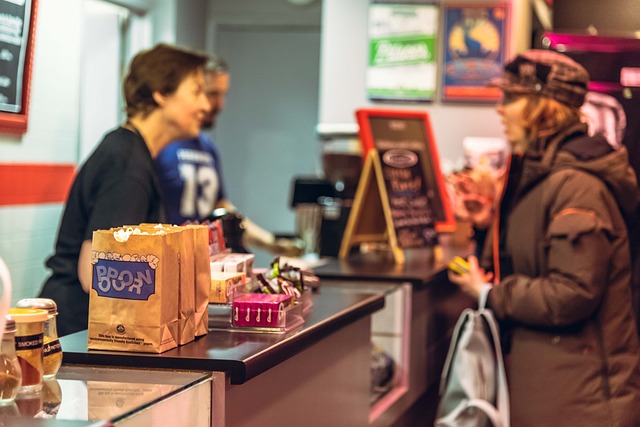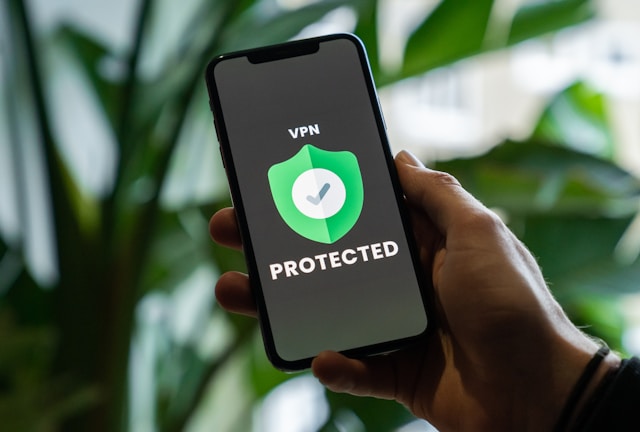Delivering ads that feel more like a helpful nudge than an interruption is nothing short of an art. While it’s not easy, sometimes, all it might take is being mindful of who’s seeing your ads. And this is exactly what geolocation advertising does.
It’s the name of serving ads at the right time and place. When your ads are relevant to the geographical locations of your target audience, they naturally see a high click-through rate. There’s no rocket science in seeing why a location-aware campaign would be more effective than blanket advertising.
But we decided to take no chances and break it all down for you. This article explores geolocation advertising for marketers in detail. You’ll learn what it is, how it works, its benefits, and more. So let’s get started!

Table of Contents
What Is Geolocation Advertising?
Advertising in the old days was almost like trying to fish in the ocean, blindfolded, just hoping to catch something. Billboards, TV spots, and newspaper ads had no real sense of who they were reaching.
Advertising meant casting a wide net over anyone who happened to pass by. Sure, it worked to some extent, but it was a guessing game nonetheless.
Fast-forward to today, geolocation advertising has completely changed the game. Besides just targeting people based on who they are, location advertising also considers where they are. Businesses pinpoint their potential customers and serve them ads that are highly relevant to their current location.
And because this approach has promising results, you might have noticed a rise in its use. Be it social media or any niche website you visit, the ads are more or less relevant to your location. A good thing about this marketing approach is that it follows customers as they move from one location to another.
If you have been to a stadium, you might have seen food stalls use this technique. During halftime, they broadcast ads to mobile devices in the venue, offering limited-time discounts. Advertisers know you’re inside the stadium and are likely looking for food or drinks.
This particular approach uses a special type of geolocation advertising mentioned below:
- Geo-fencing: It creates a virtual boundary around a physical location (stores, events, neighborhoods). Then, it sends personalized SMS and delivers ads to people in that area.
- Beacon technology: Beacons are small devices strategically placed in locations to detect nearby mobile devices. When people come close, they trigger specific ads or promotions.
- Location-based social media ads: Social media apps allow advertisers to deliver ads to users based on real-time tracking of their geographic locations.
With that, let’s get into how this location-based marketing advertising works.

How Does Geolocation Advertising Work?
Think about the last time you opened a map app, and it instantly picked your location. That’s the same kind of data advertisers use for geolocation advertising, but how exactly do they get it? Let’s break it down for you.
First, advertisers use a location collection method depending on the required precision. Here are some of the most common of those methods.

Global Positioning System (GPS)
GPS is the most familiar technology. It uses satellites to figure out prospects’ location by communicating with their mobile devices. GPS provides incredibly precise location, usually down to a few meters, in the form of coordinates like latitude and longitude.
Advertisers can turn these coordinates into an actual address on a map.

WiFi
Instead of using satellites, WiFi relies on nearby WiFi networks to work out your physical location. This works especially well in urban areas where GPS might struggle (like inside buildings or underground).
The location data here is more general. It often identifies a zone rather than providing precise coordinates like GPS. However, it’s still enough to deliver relevant ads to the right target audience in places where GPS might falter.

Cell Tower Triangulation
Your mobile device constantly connects nearby cell towers to maintain service. Cell tower triangulation can estimate your whereabouts by measuring the distance between these towers.
It’s useful in rural areas or places with fewer WiFi signals. The data from cell towers usually provides an approximate location that is suitable for regional or neighborhood-level ad targeting.

Bluetooth (Beacons)
Beacons use Bluetooth technology to send signals to smartphones within a very close range. Retailers often use beacons inside stores to engage customers with promotions as they walk by specific sections.
The data here is hyper-local, sometimes identifying the exact aisle someone is in. This means a beacon can trigger an ad when you’re standing right next to a product display. This makes it the most effective method to engage customers with ultra-relevant content in real time.
After collecting the location data, the geolocation advertising network cross-references it with information about businesses, events, or promotions nearby. This helps advertisers in creating a highly localized marketing campaign by selecting the most relevant ads for clusters of people.

What Are the Benefits of Geolocation Advertising?
Geolocation advertising has enabled marketers to reach their target audience in ways that were once impossible. With a huge shift towards mobile devices and location data, they now have tools to optimize their marketing efforts.
Here’s how this location-based marketing brings value to the table.

1. Hyper Personalized Marketing Campaigns
Ads are an annoyance to most, but making them relevant to the target’s location, behavior, and time can make a huge difference.
Businesses can personalize every aspect of their campaigns, be it the web content, ads, language, prices, or payment methods.

2. Increased Foot Traffic
One of the biggest wins for brick-and-mortar businesses is driving actual foot traffic to physical stores. Geofencing greatly helps businesses secure these wins.
Geofencing certain hot areas and sending push notifications when someone crosses these boundaries drives plenty of foot traffic. If a prospect swipes left on those notifications, you still at least increase your brand’s awareness.

3. Improved Customer Engagement
Location-based ads allow you to catch customers right when they’re in a position to make a decision.
Timely and relevant ads can also help with onboarding new customers.

4. Better ROI for Marketers
Geolocation advertising helps businesses focus on users who are more likely to convert.
Delivering relevant ads where the likelihood of purchase decisions is high can reduce wasted ad spend and increase ROI exponentially.
5. Competitive Edge
Location-based marketing gives businesses an edge against competitors who are still relying on more traditional forms of advertising.
In fact, they can even create geofences around competitors’ locations to divert some of their customers.

Facebook Geolocation Advertising and Its Features
Facebook’s (now Meta) Location Targeting feature allows businesses to get incredibly specific about who sees their ads. All ads you see on Facebook while doom scrolling your feed are a result of businesses using this feature.
What’s special about geolocation advertising on Facebook is the ease of setting it up and the high precision it provides. With just a few clicks, you can set your ads to appear in geographical locations far away from your business.
Here are some of the key features of Facebook geofencing:
- There are six ad objectives to choose from depending on your specific business goals. These include awareness, traffic, sales, engagement, leads and app promotion.
- You can target users across up to 25 countries, 250 cities, or 50,000 postcodes.
- There’s a feature that excludes specific areas from your geofence to refine your target audience further.
- You can also include filters for age, gender, and language to reach the right type of people in those areas.
- You can see how well your ads are performing in terms of engagement, conversions, and overall impact in Facebook Ads Manager.

How Can GeoPlugin Help With Mobile Geolocation Advertising?
It’s clear that reaching the right audience at the right time can make or break a marketing campaign’s success.
Now, what if you could gather location data just from the IP addresses of mobile devices for your geolocation advertising campaigns? This is where you can count on GeoPlugin.
GeoPlugin helps businesses access geolocation information through IP addresses. It provides key details like city, country, zip code, and approximate coordinates among other details.
By integrating its API with your website, you can geolocate visitors in real-time and adjust site content accordingly. You can also build your own database of target audience’s locations to use for future campaigns.
Sign up for GeoPlugin today and increase your chances of success in your next ad campaign!

FAQ
What are geo advertising examples?
When a new amusement park or supermarket opens in your area, you see its ads while scrolling through social media. Advertisers serve these ads only to residents of the city or nearby neighborhoods. They’re more likely to visit because they’re closer to the venue.
How does geolocation advertising work?
Geolocation advertising uses GPS, WiFi, cell tower triangulation, or Bluetooth to source location data from mobile devices. Advertisers then use this data to deliver personalized ads based on where the target audience is.
These ads can appear when the target crosses a specified geofence or simply visits a website.












